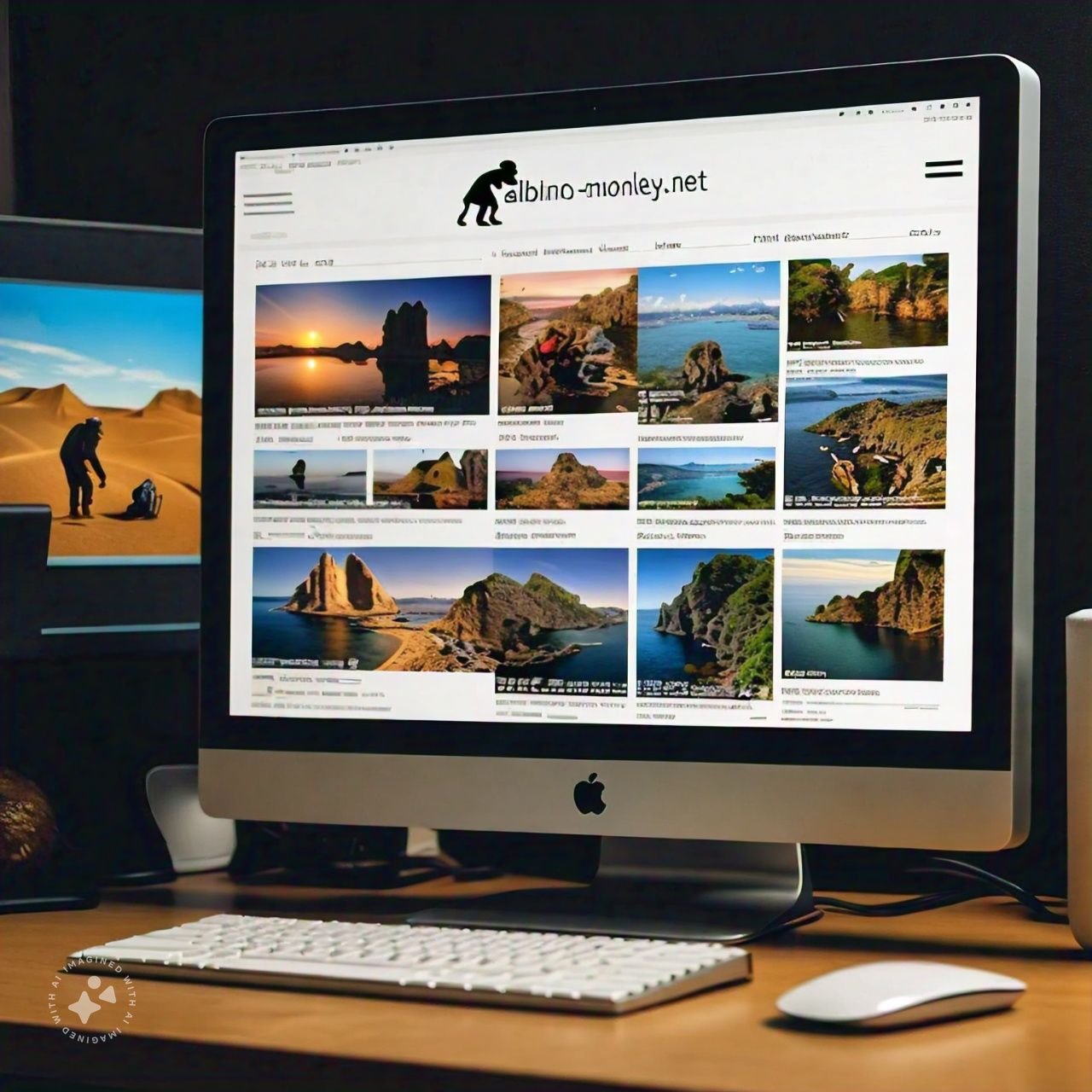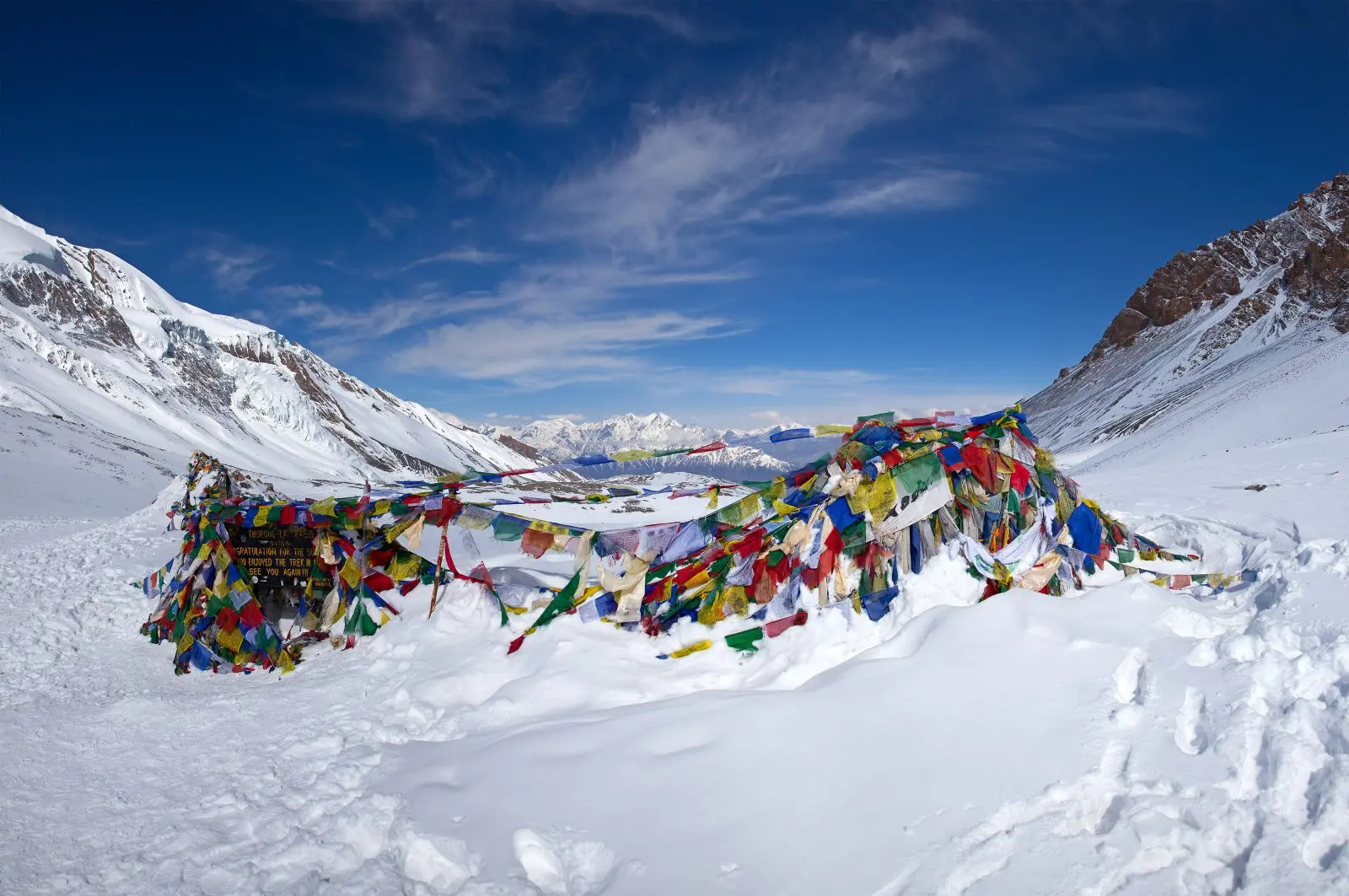Travel
Exploring Albino Monkey: A Journey Through Travel Archives

In today’s fast-paced world, travel has become more than just a leisure activity; it’s a gateway to adventure, cultural exchange, and personal growth. With the rise of digital platforms, travel enthusiasts have found innovative ways to document their journeys. One such platform is Albino Monkey, a website dedicated to sharing travel experiences, tips, and stories. In this blog post, we will explore the travel archives of Albino Monkey, highlighting the unique features of the site, popular destinations, travel tips, and the community that makes this platform thrive.
The Essence of Albino Monkey
Albino Monkey is a travel website that aims to inspire wanderlust in its readers. Founded by passionate travelers, the site serves as a digital archive for travel enthusiasts to share their stories, photographs, and insights. With a diverse range of content, Albino Monkey showcases the beauty of travel while providing valuable information for anyone looking to embark on their adventures.
Key Features of Albino Monkey
1. User-Generated Content
At the heart of Albino Monkey is its user-generated content. Travelers from all over the world contribute articles, photos, and videos, creating a rich tapestry of experiences. This diversity allows readers to explore destinations through the eyes of different travelers, gaining unique perspectives and insights.
2. Interactive Travel Map
One standout feature of Albino Monkey is its interactive travel map. Users can explore various regions and click on specific destinations to view travel stories, tips, and photographs related to that area. This map is an excellent tool for those planning their next trip, providing inspiration and practical information at their fingertips.
3. Travel Guides and Resources
Albino Monkey offers comprehensive travel guides that cover everything from accommodation and transportation to local attractions and cultural insights. These guides serve as valuable resources for travelers, helping them navigate new environments with ease.
4. Community Engagement
The site fosters a strong sense of community among travelers. Users can comment on posts, share their own experiences, and connect with fellow wanderers. This engagement not only enhances the travel experience but also builds friendships that transcend geographical boundaries.
Popular Destinations in Albino Monkey Archives
Albino Monkey’s travel archives cover a wide range of destinations, catering to various interests and travel styles. Here are some of the most popular destinations featured on the site:
1. Bali, Indonesia
Bali is a perennial favorite among travelers, and Albino Monkey showcases its stunning beaches, vibrant culture, and lush landscapes. From the bustling streets of Ubud to the tranquil shores of Seminyak, the articles offer insights into the best places to stay, eat, and explore. Travelers share their experiences with Balinese cuisine, traditional ceremonies, and the island’s famous rice terraces.
2. Tokyo, Japan
Tokyo’s blend of tradition and modernity makes it a captivating destination. Albino Monkey’s travel archives feature personal accounts of navigating the city’s bustling neighborhoods, visiting historic temples, and indulging in delicious street food. Readers can find tips on transportation, cultural etiquette, and must-visit attractions, all presented through the lens of fellow travelers.
3. Barcelona, Spain
With its stunning architecture and vibrant atmosphere, Barcelona is a city that resonates with many travelers. Albino Monkey highlights the city’s iconic landmarks, such as the Sagrada Família and Park Güell, while also delving into local hidden gems. Contributors share their experiences of exploring the Gothic Quarter, enjoying tapas, and experiencing the lively spirit of the city.
4. Cape Town, South Africa
Cape Town’s breathtaking landscapes and rich history make it a sought-after destination. The travel archives on Albino Monkey provide insights into hiking Table Mountain, visiting the Cape of Good Hope, and exploring the vibrant neighborhoods of Bo-Kaap and Woodstock. Articles often include practical tips on safety, transportation, and cultural experiences.
5. Iceland
Iceland’s otherworldly landscapes have captured the hearts of adventurers. Albino Monkey features stories of exploring the Golden Circle, witnessing the Northern Lights, and soaking in natural hot springs. Travelers share their experiences of road-tripping across the country, providing tips on the best times to visit and must-see locations.
Travel Tips and Resources

In addition to destination highlights, Albino Monkey offers a wealth of travel tips and resources to help readers plan their journeys effectively. Here are some key topics covered in the archives:
1. Budget Travel
Traveling on a budget is a common concern for many adventurers. Albino Monkey features articles that provide tips on finding affordable accommodation, budgeting for meals, and discovering free or low-cost activities. Travelers share their personal strategies for maximizing their experiences without breaking the bank.
2. Solo Travel
Solo travel has gained popularity in recent years, and Albino Monkey offers insights specifically for solo adventurers. Articles cover topics such as safety tips, finding community while traveling alone, and embracing the freedom that comes with exploring new places independently.
3. Sustainable Travel
As awareness of environmental issues grows, many travelers are seeking ways to travel more sustainably. Albino Monkey highlights eco-friendly practices, responsible tourism, and destinations that prioritize sustainability. Contributors share their experiences supporting local communities and minimizing their environmental impact.
4. Travel Photography
Capturing the essence of a journey is essential for many travelers, and Albino Monkey provides tips on travel photography. Articles cover techniques for taking stunning photos, editing tips, and how to tell a story through images. This section appeals to both amateur photographers and those looking to enhance their skills.
5. Packing Tips
Packing efficiently can make or break a trip. Albino Monkey’s archives include articles on packing hacks, must-have items for different destinations, and advice on traveling with carry-ons. Contributors share their experiences with packing light and ensuring they have everything they need for their adventures.
The Community Behind Albino Monkey
One of the most compelling aspects of Albino Monkey is the community that has formed around it. Travelers from diverse backgrounds come together to share their stories, tips, and insights, creating a supportive and encouraging environment.
1. Traveler Spotlights
Albino Monkey features traveler spotlights, showcasing individuals who have made a significant impact on the travel community. These spotlights often include interviews, allowing readers to learn about the experiences and motivations of fellow travelers. This personal connection fosters a sense of camaraderie among users.
2. Collaborative Projects
The community often engages in collaborative projects, such as travel challenges or group trips. These initiatives provide opportunities for members to connect, share experiences, and create lasting memories together. Such projects encourage interaction and inspire users to explore new destinations.
3. Social Media Presence
Albino Monkey maintains an active presence on social media platforms, allowing users to connect and share their travel experiences beyond the website. The community shares photos, tips, and stories, further strengthening bonds among travelers. Engaging with followers on platforms like Instagram and Facebook creates a dynamic online community.
Conclusion
Albino Monkey is more than just a travel website; it is a vibrant community of adventurers sharing their journeys and inspiring others to explore the world. With its rich archives of travel stories, tips, and destination highlights, the platform serves as a valuable resource for anyone looking to embark on their next adventure. Whether you’re a seasoned traveler or planning your first trip, the insights and experiences shared on Albino Monkey will undoubtedly fuel your wanderlust.
As we navigate a world that often feels divided, platforms like Albino Monkey remind us of the beauty of human connection and the shared experiences that come from exploring our planet. So pack your bags, grab your camera, and get ready to join the incredible journey that awaits you in the travel archives of Albino Monkey.
Share this content:

Travel
Annapurna Circuit Trek Nepal: A Tapestry of Adventure, Culture, and Himalayan Majesty

The Annapurna Circuit Trek Nepal is not merely a hiking expedition; it is a transformative journey through one of the world’s most diverse and captivating landscapes. Winding through the heart of central Nepal, this legendary trek offers an unrivaled fusion of natural beauty, cultural immersion, and physical challenge that appeals to adventurers and spiritual seekers alike.
Spanning approximately 160 to 230 kilometers, depending on the chosen route, the Annapurna Circuit circumnavigates the colossal Annapurna Massif. It typically takes 15 to 20 days to complete, although the timeframe can be tailored to accommodate individual time constraints and fitness levels. What distinguishes the Annapurna Circuit Trek in Nepal from other high-altitude treks is its ever-changing scenery, from subtropical forests and terraced farmlands to alpine meadows and arid highlands resembling Tibetan plateaus. Every step along this serpentine path reveals a fresh facet of Nepal’s awe-inspiring terrain.
The trek usually begins in the lush village of Besisahar, where emerald valleys and cascading waterfalls dominate the landscape. As trekkers ascend through rhododendron groves and bamboo forests, they pass through charming hamlets inhabited by various ethnic groups, including the Gurung, Magar, and Thakali. Each village showcases unique architectural styles, local dialects, and ancient customs, offering trekkers a rare window into Nepal’s ethnolinguistic mosaic.
One of the most iconic segments of the Annapurna Circuit Trek Nepal is the crossing of the Thorong La Pass at 5,416 meters (17,769 feet). Reaching this windswept mountain saddle is both a physical feat and an emotional triumph. The ascent demands stamina, mental grit, and respect for altitude. Yet, the reward is immense—panoramic views that encompass some of the world’s tallest peaks, including Annapurna I, Dhaulagiri, and Manaslu. For many, standing atop Thorong La is a moment of profound introspection, a high-altitude revelation wrapped in snow and silence.
Yet, this trek is not solely about conquering physical heights. It is equally a spiritual and cultural odyssey. Along the way, trekkers encounter ancient monasteries adorned with prayer flags, spinning prayer wheels, and chortens that reflect the deep Buddhist and Hindu influences in the region. The sacred Muktinath Temple, revered by both Hindus and Buddhists, is a highlight. Located in the Mustang district, it symbolizes liberation and peace, drawing pilgrims from across Asia.
The Annapurna Circuit Trek Nepal also weaves through starkly contrasting climates. In one day, a trekker might hike from subtropical jungles into icy alpine zones. This ecological richness supports a diverse array of wildlife, including blue sheep, Himalayan tahr, and the elusive snow leopard. Such diversity enhances the trek’s allure, offering a symphony of sights, sounds, and experiences at every turn.
While the trek has become more accessible due to infrastructural developments, such as jeep roads and teahouse accommodations, it retains much of its raw charm and authenticity. The traditional teahouses, often family-run, offer hearty Nepali meals, such as dal bhat, and provide warm, simple accommodations. These spaces foster camaraderie among travelers, turning strangers into lifelong friends over mugs of steaming masala chai.
Sustainability and responsible tourism are increasingly emphasized on the circuit. Trekking agencies and local communities encourage the use of refillable water bottles, proper waste disposal, and cultural sensitivity to preserve the fragile mountain environment and the dignity of the people who call it home.
In conclusion, the Annapurna Circuit Trek Nepal is more than a physical journey—it is a dance between nature and soul, tradition and transformation. Whether you seek Himalayan vistas, cultural richness, or inner awakening, this trek offers an epic narrative etched into the Nepalese mountainscape. It invites you not just to witness the world’s grandeur, but to become a part of it, one step, one village, one heartbeat at a time.
Annapurna Circuit Trek Itinerary: A Journey Through Nepal’s Breathtaking Heart
The Annapurna Circuit Trek Itinerary is more than a checklist of places to visit; it is a transformational passage through Nepal’s cultural soul and geographical grandeur. Nestled in the mighty Himalayas, this world-renowned trekking route offers a symphony of experiences, ranging from lush subtropical forests and terraced rice paddies to arid alpine valleys and windswept high mountain passes. The itinerary weaves together natural splendor, spiritual sanctity, and human resilience, making it a magnet for adventure seekers and cultural enthusiasts alike.
Day-by-Day Breakdown: The Anatomy of a Trek
Day 1–3: Kathmandu to Besisahar and Trek to Dharapani
The journey typically begins in Kathmandu, a vibrant city buzzing with culture and color. From here, a jeep ride to Besisahar introduces trekkers to the rural heartlands of Nepal. The trek begins with a gentle ascent through forests and riverside trails, leading to Dharapani. These initial days are crucial for acclimatization and mental attunement as one transitions from an urban tempo to a mountain rhythm.
Day 4–6: Came to Upper Pisang from Manang
As the trail gains altitude, villages like Chame and Pisang unveil panoramic vistas of Annapurna II and Lamjung Himal. The architecture here is distinctly Tibetan-influenced, a preview of the cultural immersion ahead. The trail through Upper Pisang rewards trekkers with a dramatic ridgeline hike that enhances altitude adaptation before reaching Manang, a significant stopover for acclimatization. With its picturesque landscape and ancient monasteries, Manang serves as both a rest point and a cultural destination.
Day 7–9: Acclimatization in Manang to Yak Kharka and Thorong Phedi
After a rest day involving light hikes to Gangapurna Lake or Bhojo Gompa, the trail continues to Yak Kharka, a grazing settlement surrounded by stark alpine beauty. The path becomes more austere, the air thinner, and the terrain rockier. Thorong Phedi—literally “base of the Thorong”—acts as a launchpad for the trek’s highest point. This part of the itinerary demands discipline in pacing and hydration, as altitude sickness is a genuine risk.
Day 10: Crossing Thorong La Pass (5,416 meters)
The zenith of the trek, both physically and spiritually, is Thorong La Pass. Starting pre-dawn, trekkers ascend under starlit skies, eventually emerging into a world above clouds. The feeling of summiting one of the highest trekking passes on Earth is both humbling and euphoric. Colorful prayer flags flutter wildly at the pass, marking a spiritual milestone and rewarding each drop of sweat shed along the way.
Day 11–13: Descent to Muktinath, Jomsom, and Tatopani
From Thorong La, the descent to Muktinath brings a sudden cultural shift. A sacred pilgrimage site for both Hindus and Buddhists, Muktinath is a living testament to Nepal’s syncretic spirituality. Further down, the trail meanders through the arid Kali Gandaki valley to Jomsom, an apple-rich town known for its strong winds and airstrip. Eventually, the trail reaches Tatopani, home to natural hot springs that soothe tired muscles and rejuvenate trekkers for the next leg.
Day 14–18: Ghorepani, Poon Hill, and Return to Pokhara
The final stretch involves a climb to Ghorepani and the iconic Poon Hill, famous for its sunrise views over Dhaulagiri and Annapurna ranges. This finale is a visual crescendo, golden peaks piercing the mist and sky, a sight that lingers in memory forever. Descending through rhododendron forests and lively Gurung villages, the trek concludes in Nayapul, from where Pokhara, Nepal’s serene lake city, beckons with comfort and celebration.
What Makes This Itinerary So Unique?
Diversity of Terrain and Climate: The Annapurna Circuit is one of the few treks that encompasses such a dramatic range of ecosystems, from verdant river valleys to stark trans-Himalayan deserts, all in a single continuous loop.
Cultural Tapestry: The route traverses multiple ethnic territories, including Gurung, Thakali, and Manangi villages, each offering distinct customs, cuisines, and languages. It is not merely a trek but a cross-cultural expedition.
Adaptability and Customization: While the classical itinerary spans 18–21 days, it can be compressed or expanded with detours to Tilicho Lake or side hikes through the Nar Phu Valley, allowing for flexibility in varying time frames and interests.
Spiritual Encounters: From humble stupas to ancient monasteries and high mountain shrines, the trek is suffused with spiritual symbols that offer moments of introspection and awe.
Annapurna Circuit Trek Cost: A Comprehensive Overview
The Annapurna Circuit Trek, nestled within the majestic folds of the Nepalese Himalayas, is a bucket-list adventure for trekkers worldwide. Renowned for its breathtaking landscapes, cultural richness, and diverse ecosystems, the trek is both a physical and spiritual journey. However, one of the most pressing considerations before embarking on this adventure is understanding the Annapurna Circuit Trek cost. Budgeting effectively can mean the difference between a stress-free hike and one riddled with financial uncertainty.
1. Permits and Entry Costs
Before lacing up your boots, it’s essential to secure two vital permits: the Annapurna Conservation Area Permit (ACAP) and the Trekkers’ Information Management System (TIMS) card. As of 2025, these combined permits cost approximately $50 USD. These fees contribute to maintaining the trails, preserving biodiversity, and ensuring trekkers’ safety through tracking services. Though not exorbitant, they are mandatory and non-negotiable for anyone venturing into the region.
2. Transportation Costs
Most trekkers begin the Annapurna Circuit from Besisahar or Jagat, and end the trek in Jomsom, Pokhara, or even loop back to Kathmandu. Transportation costs vary depending on the mode of travel:
- Bus from Kathmandu to Besisahar: $10–$15
- Shared Jeep to Jagat or Chame (to skip the rougher road sections): $20–$40
- Domestic Flight from Jomsom to Pokhara (optional but time-saving): $100–$120
- Bus or Tourist Coach from Pokhara to Kathmandu: $10–$30
Altogether, a round-trip transport budget of around $150–$200 is a wise estimate.
3. Accommodation and Food
The Annapurna Circuit is dotted with numerous teahouses, offering basic but comfortable lodging. Most rooms are twin-shared, with the cost depending on altitude and season:
- Low altitude teahouse rooms: $3–$5 per night
- High altitude rooms: $6–$10 per night (or more during peak season)
Interestingly, the rooms are often inexpensive because the teahouse model primarily profits from food sales. You are expected to eat at the same place where you stay, or you may be charged an extra fee.
Meals range from $3 to $10, with higher prices at greater altitudes due to the logistical challenges of transportation. Expect to spend:
- Breakfast: $3–$5 (e.g., porridge, Tibetan bread, eggs)
- Lunch and Dinner: $5–$10 each (popular choice: Dal Bhat – a nutritious lentil and rice dish with unlimited refills)
For a 15- to 20-day trek, the cost of food and accommodation together may range from $300 to $500, depending on the level of luxury or simplicity you prefer.
4. Guide and Porter Fees
Hiring a guide or porter is optional but highly recommended for safety, cultural enrichment, and support. Guides can offer valuable insights into local traditions and geography, and can also assist with managing logistics and navigating language barriers.
- Guide: $25–$35/day
- Porter: $15–$25/day (carries up to 20–25 kg of your gear)
A combined guide-porter is an efficient, budget-friendly option. For a 15-day trek, expect to pay around $400–$600 for these services, including tips.
5. Equipment and Gear
Many trekkers already own basic gear, but some may need to rent or purchase items in Kathmandu or Pokhara. Essential gear includes:
- Sleeping bag
- Trekking poles
- Down jacket
- Hiking boots
Renting is affordable: sleeping bags and jackets may cost $1–$ 2 per day. Buying high-quality gear can add $100–$300 to your budget. It’s worth investing in gear that will keep you warm and dry in unpredictable mountain weather.
6. Miscellaneous Expenses
Additional expenses may sneak up unexpectedly:
- Charging devices: $1–$3 per hour
- Hot showers: $2–$5
- Wi-Fi access: $2–$5 per day
- Snacks, drinks, souvenirs: Variable, but budget around $50–$100
- Insurance: Highly recommended; a comprehensive trekking policy with emergency evacuation can cost $100–$150
Total Estimated Cost
Depending on your travel style, the total Annapurna Circuit Trek cost can range from $700 to USD 1500, broken down approximately as:
| Category | Budget (USD) |
| Permits | $50 |
| Transportation | $150–$200 |
| Food & Lodging | $300–$500 |
| Guide/Porter | $400–$600 |
| Gear & Equipment | $100–$300 |
| Miscellaneous | $100–$150 |
| Total | $700–$1500 |
Conclusion
The Annapurna Circuit Trek is a priceless experience—but not one without a price. Its affordability compared to other global treks, combined with Nepal’s legendary hospitality and rich scenery, makes it a tremendous value. Whether you’re on a backpacker’s shoestring or a more flexible budget, careful planning around the Annapurna Circuit Trek cost ensures that you can enjoy the journey without financial anxiety. Investing wisely in preparation and services not only enriches your trek but also contributes to the local economy and environmental conservation, ensuring that future generations can enjoy this Himalayan marvel.
Share this content:
Travel
Explore Mega-Personal.net Travel Archives: Your Gateway

Traveling opens up a world of opportunities to explore new cultures, cuisines, and breathtaking destinations. If you’re a travel enthusiast seeking inspiration or planning your next trip, the Mega-Personal.net travel archives are an invaluable resource. These archives provide a comprehensive collection of travel stories, tips, and guides that cater to every type of traveler.
In this article, we’ll dive into the benefits of exploring the Mega-Personal.net travel archives and highlight how they can make your travel planning seamless and enjoyable.
Why Use Mega-Personal.net Travel Archives?
Planning a trip can be both exciting and overwhelming. From choosing the right destination to finding the best deals, the process involves careful consideration. The Mega-Personal.net travel archives simplify this process by offering well-curated travel content. Here’s why they’re worth exploring:
1. A Wealth of Destination Guides
The archives feature detailed guides on various destinations worldwide. Whether you’re dreaming of tropical beaches, bustling cities, or serene mountain retreats, the Mega-Personal.net travel archives have you covered. Each guide includes essential details such as must-visit attractions, local cuisines, and cultural insights.
2. Insider Travel Tips
Traveling like a local enhances your experience. The Mega-Personal.net travel archives offer insider tips that help you navigate unfamiliar places, find hidden gems, and avoid tourist traps. From budgeting advice to packing hacks, these tips ensure you’re well-prepared for your journey.
3. Personalized Recommendations
One of the standout features of the Mega-Personal.net travel archives is the personalized travel recommendations. By analyzing popular trends and user interests, the archives provide suggestions tailored to your preferences. Whether you’re a solo traveler or planning a family vacation, you’ll find options that suit your style.
Top Travel Categories in Mega-Personal.net Travel Archives

1. Adventure Travel
For thrill-seekers, the Mega-Personal.net travel archives have an extensive collection of adventure travel stories. From hiking in the Himalayas to scuba diving in the Great Barrier Reef, these archives inspire you to step out of your comfort zone and embrace adrenaline-pumping activities.
2. Cultural Journeys
Immerse yourself in diverse cultures through the archives’ rich collection of cultural travel experiences. Learn about local traditions, festivals, and historical landmarks as you explore the world through the lens of the Mega-Personal.net travel archives.
3. Budget Travel
Traveling doesn’t have to break the bank. The archives are filled with practical tips for budget-friendly travel, including affordable accommodations, cheap transportation options, and cost-effective itineraries. The Mega-Personal.net travel archives ensure that adventure is accessible to everyone.
4. Luxury Escapes
If you prefer the finer things in life, the archives also cater to luxury travelers. Discover exclusive resorts, premium dining experiences, and opulent travel options to make your trips unforgettable.
How to Make the Most of Mega-Personal.net Travel Archives
1. Start with Your Interests
The Mega-Personal.net travel archives are organized into categories, making it easy to find content that matches your interests. Whether you’re into wildlife safaris or urban exploration, start with the section that resonates with you.
2. Use the Search Feature
If you have a specific destination in mind, the archives’ search feature is your best friend. Simply enter the location, and you’ll be presented with a range of articles, guides, and tips tailored to that destination.
3. Bookmark Useful Content
While browsing the Mega-Personal.net travel archives, bookmark articles that you find particularly helpful. This way, you can revisit them while planning your trip or share them with fellow travelers.
Benefits of Planning with Mega-Personal.net Travel Archives
1. Time-Saving Convenience
Instead of scouring multiple websites for travel information, the Mega-Personal.net travel archives consolidate everything you need in one place. This saves you time and allows you to focus on the excitement of planning your trip.
2. Reliable Information
All content in the Mega-Personal.net travel archives is carefully curated, ensuring that the information you receive is accurate and up-to-date. This reliability gives you confidence in your travel decisions.
3. Inspiration for Future Trips
Even if you’re not currently planning a trip, browsing the archives can inspire future adventures. Reading about unique destinations and exciting travel experiences might spark ideas for your next getaway.
Real Experiences Shared in Mega-Personal.net Travel Archives
The archives aren’t just about travel tips—they also feature real-life experiences from travelers worldwide. These personal stories offer unique perspectives, highlighting the joys, challenges, and memorable moments of traveling. Exploring these narratives can help you prepare for your own adventures and build realistic expectations.
Conclusion
The Mega-Personal.net travel archives are more than just a collection of travel content—they’re a gateway to your next great adventure. Whether you’re an experienced traveler or embarking on your first trip, these archives provide the inspiration, guidance, and resources you need to make your journey unforgettable.
Start exploring the Mega-Personal.net travel archives today and unlock a world of opportunities to discover, learn, and experience the magic of travel. Your next adventure awaits!
Share this content:
Travel
Flying on a Budget: What You Need to Know About Spirit Airlines

Introduction
Overview of Spirit Airlines: Briefly introduce Spirit Airlines as one of the major low-cost carriers in the United States, known for its no-frills model and affordable base fares.
Why Choose Spirit: Mention the growing interest in budget airlines due to rising travel costs. Point out Spirit’s popularity among budget-conscious travelers.
Section 1: About Spirit Airlines – History & Mission
Founding and Growth: A brief history of Spirit Airlines, founded in 1983, its rebranding as a low-cost carrier in the early 2000s, and expansion across North America.
Mission and Model: Emphasize Spirit’s commitment to offering ultra-low fares and its goal of “providing more go” by making flying accessible to everyone.
Fleet and Network: Overview of Spirit’s fleet (primarily Airbus) and the destinations it covers, from major U.S. cities to international destinations in the Caribbean, Central, and South America.
Section 2: Understanding the “Bare Fare” Model
What is Bare Fare?: Explain the concept behind Spirit’s “Bare Fare” – a low base fare that covers only the seat, with additional fees for carry-ons, checked bags, seat selection, refreshments, and more.
Customization: How this allows travelers to customize their flying experience and only pay for what they need, perfect for light packers or short trips.
Spirit’s Fee Structure: Breakdown of the different fees (carry-on, checked bags, seat selection, priority boarding, etc.) and when they apply, such as buying online vs. at the airport.
Section 3: Benefits and Drawbacks of Spirit Airlines
Pros
Cost-Effectiveness: For travelers with flexible schedules, no baggage, and minimal expectations, Spirit can be incredibly cost-effective.
Expanding Routes: Spirit’s expanding network is beneficial for domestic and international travelers, especially in smaller U.S. markets.
Options for Flexibility: Highlight the benefits of Spirit’s “Bundle It” packages, such as the Flight Flex and Shortcut Boarding options.
Cons
Add-On Fees: Discuss how quickly the fare can add up if a traveler isn’t cautious about fees.
Service Limitations: Limitations in amenities (no in-flight entertainment, basic seating comfort, etc.) and the sparse, airport-based customer service.
Frequent Delays and Cancellations: Acknowledging Spirit’s reputation for delays, along with the pros and cons of their strict refund policies.
Section 4: Tips for Flying with Spirit Airlines

Pack Smart: Tips on how to travel with a free personal item to avoid carry-on fees.
Book Bags in Advance: The advantage of booking luggage online vs. at the airport to save money.
Check-In Online: How checking in online can help you avoid fees and get through the airport faster.
Choose Seats Wisely: Guidance on Spirit’s seating options and whether to pay for a reserved seat or take the risk of random assignment.
Spirit Saver$ Club: Explain Spirit’s membership program, which provides discounts on fares and luggage fees for frequent flyers.
Section 5: Comparing Spirit Airlines to Other Budget Airlines
Spirit vs. Southwest, Allegiant, and Frontier: Compare Spirit’s model with other budget carriers, highlighting where it stands out and where it falls short.
Customer Satisfaction: Brief insight into customer ratings and satisfaction, noting Spirit’s approach to minimal service compared to Southwest’s “bags fly free” model.
Section 6: Who Should Fly with Spirit Airlines?
Ideal Travelers: Outline the types of travelers who will benefit the most from Spirit Airlines, such as young travelers, solo flyers, and people who don’t mind “roughing it” a bit for the sake of budget.
Who Might Want to Avoid It: Mention passengers who may struggle with Spirit’s limitations, including families with young kids or passengers requiring in-flight comforts.
Conclusion
Final Takeaways: Reiterate Spirit’s appeal to travelers on a budget and how being aware of the rules, fees, and policies can help travelers make the most of Spirit.
Personal Verdict: A balanced opinion on Spirit Airlines – it’s a great choice for some but may not be the best fit for everyone.
Share this content:
-

 App6 months ago
App6 months agoExperience Unlimited Entertainment with Castle APK for Android
-

 Health6 months ago
Health6 months agoВетеринарная клиника VetCityPets: Забота о вашем питомце на высшем уровне
-

 AI8 months ago
AI8 months agoUnderstanding 라마 3.1: Features, Benefits, and Applications
-

 Business8 months ago
Business8 months agoSnow Day Calculator: How to Predict School Closures
-

 Business7 months ago
Business7 months agoLand Rover Defender vs. Toyota Land Cruiser: Battle of the Luxury Off-Roaders
-

 Travel6 months ago
Travel6 months agoExplore Mega-Personal.net Travel Archives: Your Gateway
-

 Ronaldo8 months ago
Ronaldo8 months agoRonald Acuña Jr.: The Rise of a Baseball Superstar
-

 BLOG8 months ago
BLOG8 months agoThe Ultimate Guide to Becoming a Car Guru: Tips for Car Enthusiasts and Buyers
Pingback: Why an MBA is Essential for Experienced Professionals: A Deep Dive - ronaldo.com.in